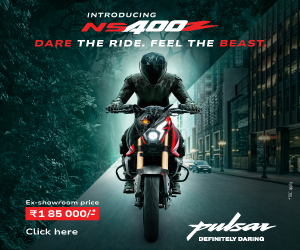 This month we bring you guidelines on how to be responsible in city environs
This month we bring you guidelines on how to be responsible in city environs
You may be the type of rider who would want to keep the speed and lean angles for the racetrack or a weekend ride and would rather be slow while on city streets. Or you could simply be the kind who is not attracted to speed and looks at a motorcycle as a convenient way to travel from point A to point B. Either way, you prefer maintaining slow speeds in city environs. But going slow is not the only way to being safe or responsible. In fact, going slow can be hazardous if not implemented in a proper manner. So this time around we are compiling a few tips on how to be a socially responsible commuter.
|
|
|
|
Do not use your mobile phones while riding |
|
|
|
|
|
Restrict use of high beam |
Carry necessary documents |
|
|
|
|
Be patient in traffic jams |
Do not ride with objects hanging from the bike |
 |
|
|
Give proper indications |
Stop that noise |







 No, that’s not a new Royal Enfield model for the overseas market but the result of a passionate biker’s dream of making a V-twin
No, that’s not a new Royal Enfield model for the overseas market but the result of a passionate biker’s dream of making a V-twin
 Don’t let the rains dampen your biking spirit. There’s fun to be had and stuff to be learnt about staying upright in slippery conditions with BIKE India’s wet weather riding guide
Don’t let the rains dampen your biking spirit. There’s fun to be had and stuff to be learnt about staying upright in slippery conditions with BIKE India’s wet weather riding guide
















 Adhish Alawani goes back to the classroom in order to learn how to ride around the track faster
Adhish Alawani goes back to the classroom in order to learn how to ride around the track faster 

























